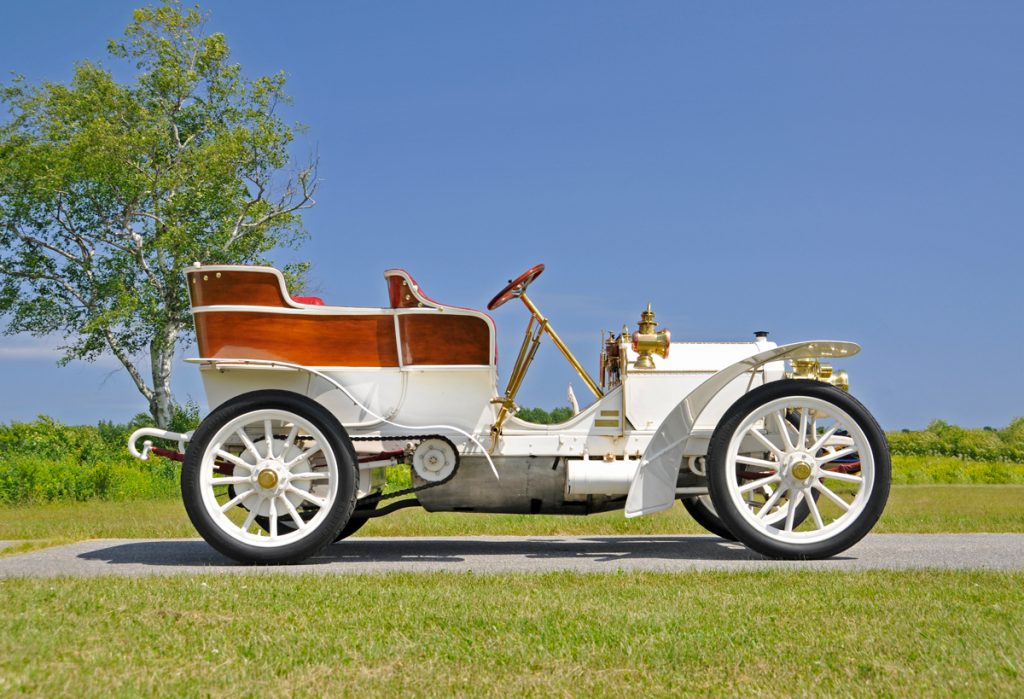1904 Mercedes Simplex 40/50

Description
Simplex is Less Complex
In 1902, most automobiles were so difficult to operate that marketers added “Simplex” to the Mercedes name to suggest that this car was easier to drive than other cars. The innovations that made the Mercedes simpler are still present in cars today.
At the time, it was common for the driver and passengers to be seated in front of the engine and for the body of…
Simplex is Less Complex
In 1902, most automobiles were so difficult to operate that marketers added “Simplex” to the Mercedes name to suggest that this car was easier to drive than other cars. The innovations that made the Mercedes simpler are still present in cars today.
At the time, it was common for the driver and passengers to be seated in front of the engine and for the body of the car to be very high off the ground, like a horse-drawn carriage. This configuration meant that engines overheated without frequently adding fresh water to their cooling systems and passengers bounced and swayed with every bump and rut in the road.
Mercedes’ designers were early adopters of putting the engine in front of the people to use fresh air to keep the engine from overheating. They also brought the car closer to the ground so everyone in the car got a smoother ride, and because of the car’s large wheels, it kept the ability to conquer rough roads.
When the Mercedes Simplex was imported to the US in 1904, it was the best-selling foriegn car in the United States that year. However, this achievement is not as lofty as it sounds. In 1904, the company produced 800 cars and 200 of them made it to America. This number was tiny compared to the 22,000 cars built in the United States in 1904.
